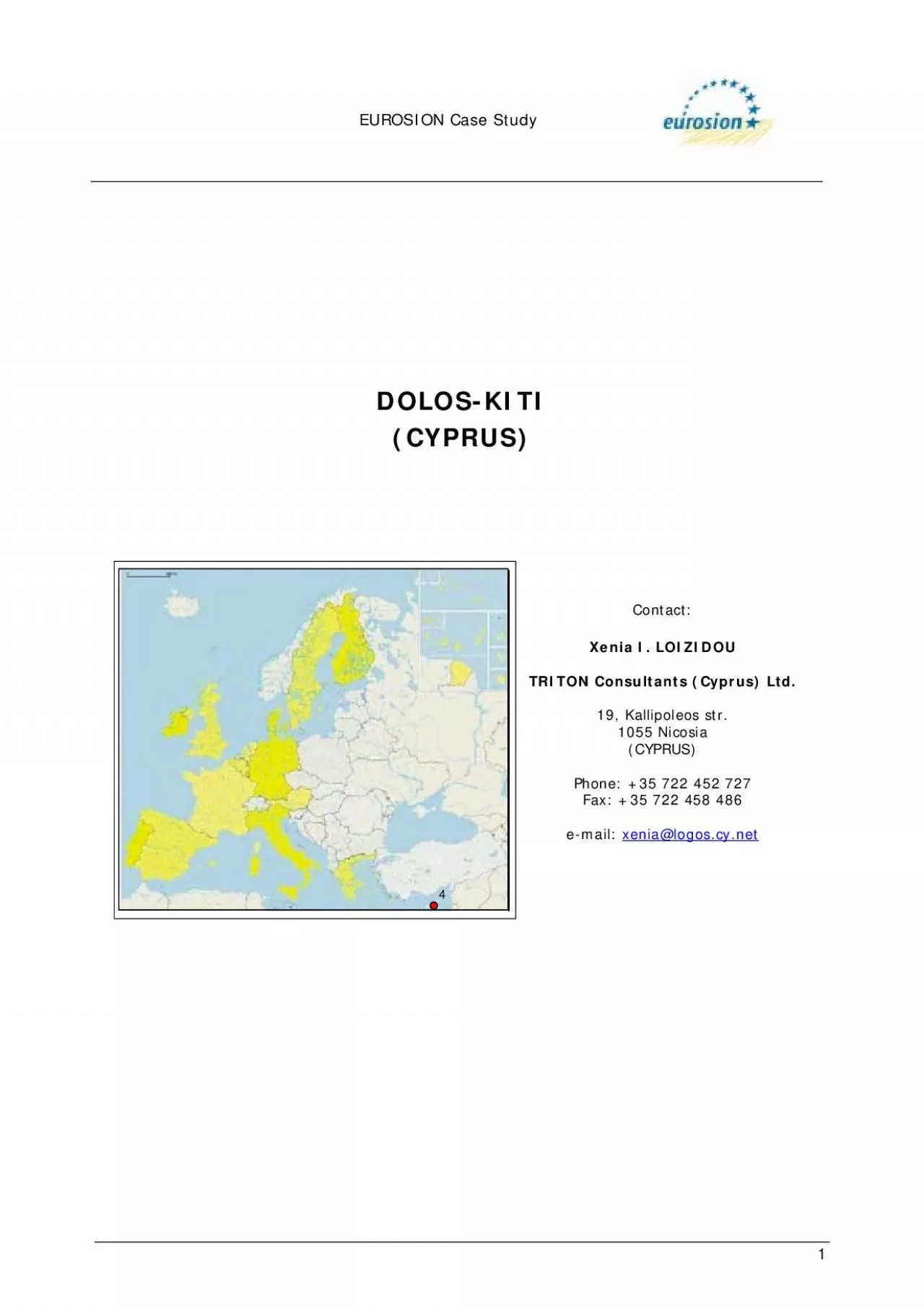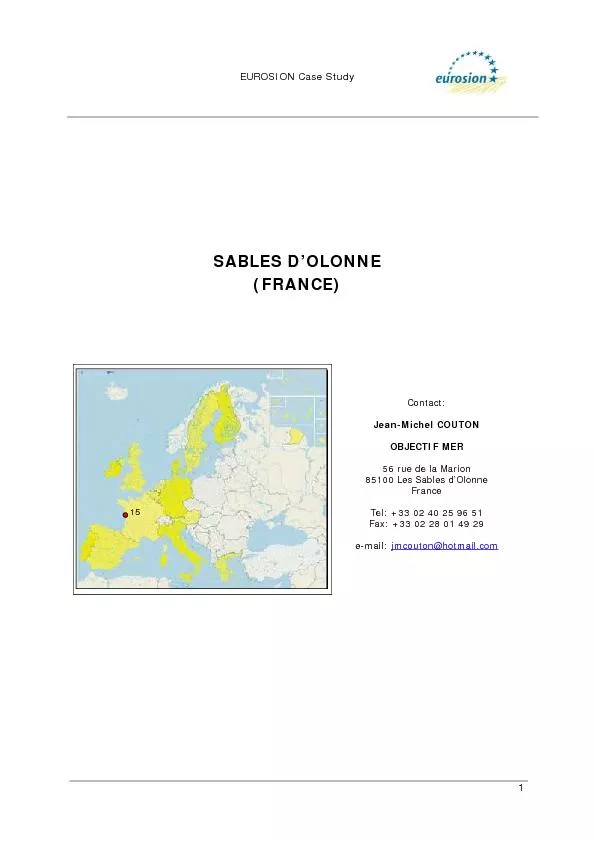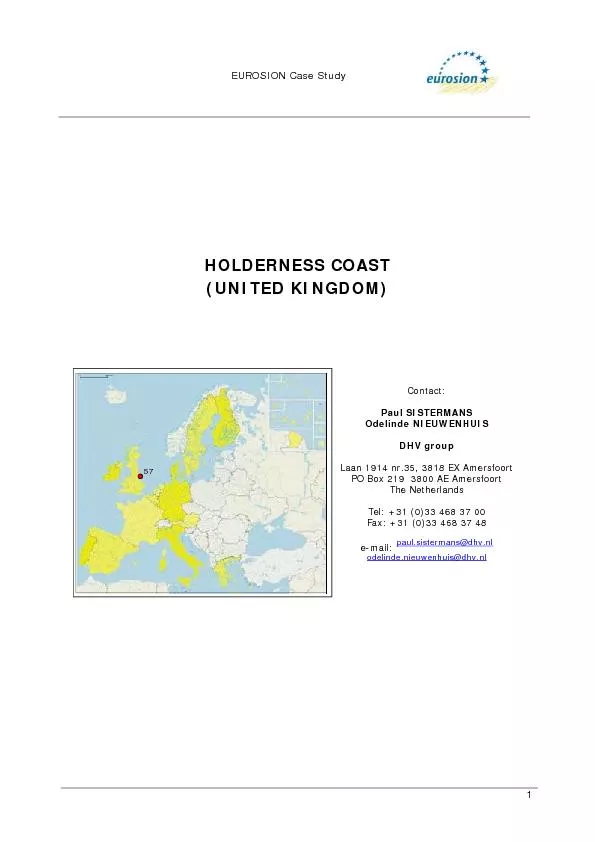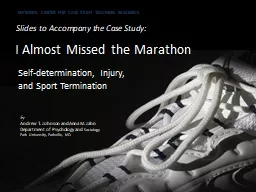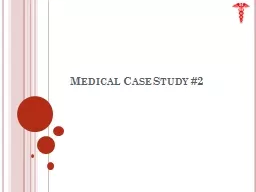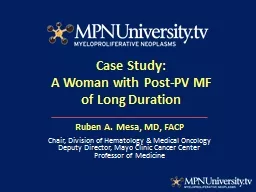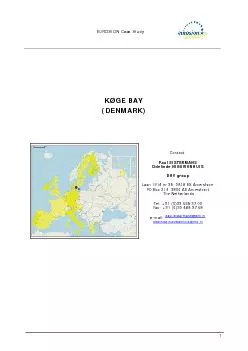PDF-EUROSION Case Study
Author : hailey | Published Date : 2021-08-04
1 Xenia I LOIZIDOU TRITON Consultants Cyprus Ltd 19 Kallipoleos str 1055 Nicosia Phone 35 722 452 727 Fax 35 722 458 486 email xenialogoscynetEUROSION Case Study
Presentation Embed Code
Download Presentation
Download Presentation The PPT/PDF document "EUROSION Case Study" is the property of its rightful owner. Permission is granted to download and print the materials on this website for personal, non-commercial use only, and to display it on your personal computer provided you do not modify the materials and that you retain all copyright notices contained in the materials. By downloading content from our website, you accept the terms of this agreement.
EUROSION Case Study: Transcript
Download Rules Of Document
"EUROSION Case Study"The content belongs to its owner. You may download and print it for personal use, without modification, and keep all copyright notices. By downloading, you agree to these terms.
Related Documents

